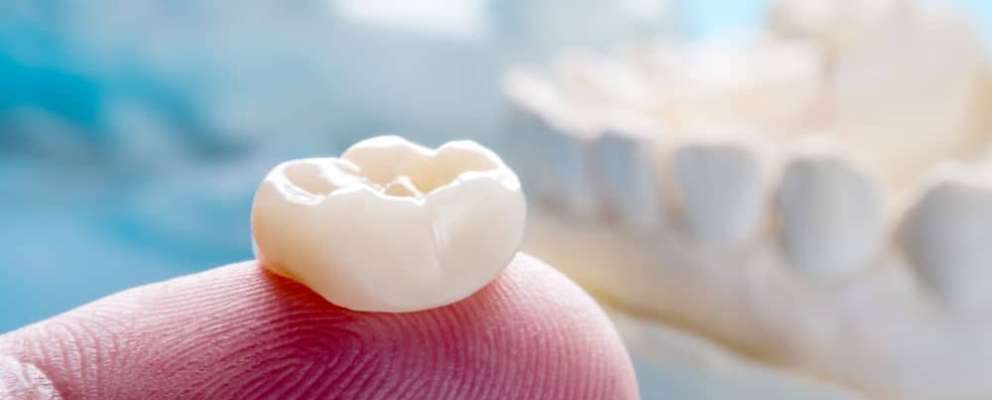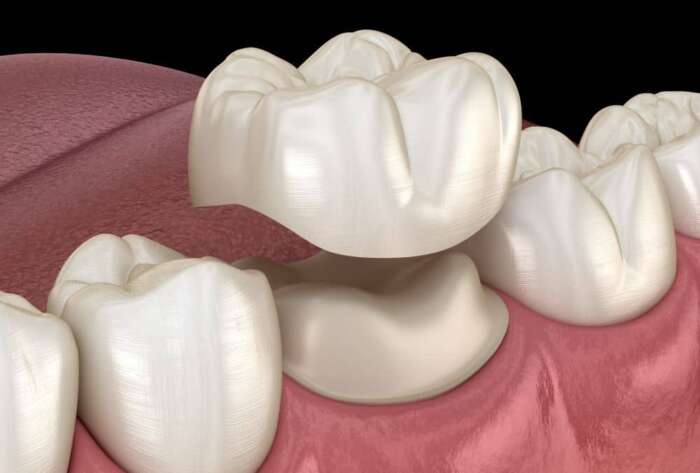Sparkling white teeth are a universally-accepted representation of the perfect smile. It is safe to say that no one wants to have stained, spotty teeth. But there are many causes of tooth yellowing, and there are only a few options to whiten. The suitable treatment greatly diminishes if you have dental crowns.
In this article you will learn about what is the use of a dental crown and understand whether or not you can whiten them.
1. What is the Use of a Dental Crown?
2. What is Teeth Whitening?
3. So, Can You Whiten Dental Crowns?
4.Tips for Your Dental Crown
Before we talk about whether or not dental crowns can be whitened, let us first discuss what they are. Tooth decay is a common issue in many people, no matter their age. Decay can weaken teeth as it continues to progress. Without proper treatment, decay can lead to pulpitis, which is a painful infection that can affect the roots of the tooth. Unfortunately, some people wait until their decayed teeth cause them unbearable pain before going to the dentist. But tooth decay is easily treatable. There are a few options to fix a decayed tooth, including a root canal to help alleviate the discomfort.
The procedure called root canal involves the removal of infected tissue that the damaged teeth caused. After the tissue is removed, a hole is created and left behind, which the dentist will fill up. Finally, a dental crown will be placed over the injured tooth. Also known as a porcelain crown or cap, a dental crown is an appliance that covers a broken, injured, or decayed tooth’s surface. Depending on the extent of the damage and the patient’s oral health, the crown can either be partial or complete.
If the whole tooth can no longer be saved, it will be extracted, followed by a dental implant. A crown will be placed on top of the implant.
What is the Use of a Dental Crown?
You are probably wondering whether or not a dental crown is always necessary, especially after a root canal. A cracked or fractured tooth can get worse if it’s not covered by a crown. The primary purpose of a dental crown is to keep a damaged tooth together, which also prevents tooth decay. Remember that small holes in your teeth can invite bacteria to leak into these cavities. If left untreated, it can lead to an infected tooth.
Dental crowns are useful for many reasons because they:
- Protect your weak tooth so that it will not deteriorate
- Help keep a cracked tooth together so that it will not break apart
- Help restore a severely worn or broken tooth
- Cover a tooth, especially one that does not have much remaining
- Cover discoloured or misshapen teeth
- Help secure a dental bridge
- Hide a dental implant
- Cover a root canal treated tooth
Dental crowns are made of different materials, including metals such as nickel, gold, chromium, and palladium. Metal crowns are strong and durable, lasting the longest even with regular biting and chewing. Other materials used are porcelain, resin, and pressed ceramic.
What is Teeth Whitening?
We all want white teeth. However, the foods and drinks we consume every day, along with our daily habits, can discolour our teeth. If your teeth are yellowish or discoloured, some treatment options are available for you to whiten your teeth. Teeth whitening will help lighten your stained teeth, a common issue in people who love to drink coffee, tea, or soft drinks, as well as those with poor oral hygiene.
You can purchase over-the-counter teeth whitening products, which you can use without professional help in the comfort of your own home. However, you cannot expect them to work instantly or even effectively. In most cases, you have to use a lot of these products and do the treatment at a specific period before you can see any changes.
The best way to whiten your teeth is to go to a dentist with the most effective tools and products to remove staining on your teeth. Additionally, a dentist is trained to know what may be causing the discolouration, which helps determine the most suitable teeth whitening treatment.
So, Can You Whiten Dental Crowns?
Dental crowns look almost like normal teeth. These tooth-shaped crowns or caps are placed over the tooth to prevent further damage to it and the adjacent teeth, as well. Think of these crowns like a snug cap for your teeth. But don’t worry; they are not going anywhere even when eating. The crown is cemented in place and will simply cover the visible part of the tooth so it’s comfortable and will not feel like anything at all.
There are a few known issues associated with dental crowns, including discomfort and sensitivity, particularly right after the procedure. A chipped and loose crown can also happen. Chipping is a usual issue with porcelain crowns. A loose crown can occur because the cement can wash out. It’s essential to call the dentist’s office when you have a chipped or loose crown.
On average, dental crowns last anywhere from five to 15 years, depending on the material used and a person’s oral hygiene. A crowned tooth does not require special care or maintenance. However, you still have your tooth underneath the crown, which should protect against gum disease, decay, and bacteria. That’s why you need to follow good oral hygiene practices, including flossing and brushing at least twice a day. Don’t forget to brush and floss around the crown area. If you have a porcelain crown, try not to bite on hard surfaces, so you do not have to deal with cracked crowns.
But what about discoloured crowns?
Crowns, like your natural teeth, can get stained over time due to your eating habits. Unfortunately, you cannot whiten your crowns. That’s because dental crowns are made from non-porous materials, such as porcelain and porcelain-metal amalgamations. Being non-porous means that the material can resist stains. However, it will also refuse any whitening treatment you have, no matter its strength.
You cannot leave the discolouration untreated, though. When you have a dental crown, you want it to match your natural teeth’s colour. That’s why it makes sense to be careful when whitening your teeth at home. You do not want your teeth to be so light that they no longer match your crown. Consequently, you would not wish your natural teeth to get stained or discoloured, which would make the crowns stand out.
If you have discoloured crowns, you should talk to your dentist immediately. Most dentists agree that the best method to solve this problem is to replace the crowns. That’s because crowns will not bleach. Once they are cemented in the mouth, you cannot change their colour.
Crown removal, however, is not an easy process. It is not only challenging but also destructive to the natural structure of the tooth. A dental health professional will assess your situation to determine if a crown removal will benefit you. Some factors will also be considered, including the state of the tooth covered by the crown, its root structure, and the state of the bone and gum surrounding the tooth.
Consultation with the dentist for crown removal and replacement will usually involve the use of an X-ray or a similar piece of equipment to figure out the treatment plan that best suits you.
Tips for Your Dental Crown
Your dream smile is achievable with your dental crowns. Here are some strategies that will help you become more confident with your pearly white smile:
- Choose the Right Crown Shade
This step is crucial, but many people disregard it because they want to hurriedly cover and save their remaining teeth. We recommend that you take a moment first and examine your teeth. Stained teeth should be whitened before the treatment. After that, your dentist can pick the correct crown shade that matches your teeth.
- Don’t Keep Your Old Crowns After a Teeth Whitening Procedure
If you have existing crowns and have recently whitened your natural teeth, wait at least two weeks to see the results. You may still need a few treatments to reach your desired brightness. Once achieved, you can then pick a good crown shade and replace the old crowns with new ones that match your newly whitened pearls.
- Whiten Your Surrounding Teeth
Your natural teeth may have discoloured over time because of your diet and age. As a result, your crown will look a little lighter and thus more noticeable. You don’t want to attract attention to them, especially if the crowns are on your front teeth. A good solution is to get a take-home tooth whitening kit or visit the dentist for professional cleaning and whitening.
In-chair whitening is the better solution since it allows you to achieve your desired teeth colour or whiteness in the shortest time possible. After the whitening procedure, the old crown will be removed in about two weeks, and a new crown will take its place. The dentist will make sure your new crown will match the whitened teeth.
We offer dental crowns here at Chelmsford Dental. It’s a process that we take seriously, just like every other dental treatment. We take the necessary time strategising so you have a good shade and shape that match your natural teeth – the perfect recipe for a bright smile you will surely love.








